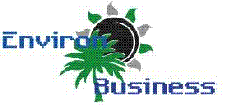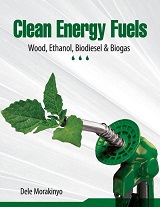
Environmental and Energy Business Resources
...everything environmental and energy...
Environmental pollution
Human (industrial, agricultural, recreational, and domestic) activities polute the environment (air, water and soil). The impacted media may later constitute hazards (chemical or physical) to humans, wildlife and plants.
Air pollution: Caused by exhausts to the atmosphere from airplanes, vehicles and industrial plants; open burning; gaseous (e.g. methane) releases from open dumps etc. Since our atmosphere is universal, it can be concluded that the earth's air medium is universally contaminated, albeit, to varying degrees. For more detailed account follow the link to the left on Air Pollution.
Water pollution: - Most of our water bodies have been impacted through our water transportation activities; heavy oil spills and leaks to water bodies, direct deposition of wastes to water bodies and contamination through seepages from landfill or dump sites. For more detailed account follow the link to the left on Water Pollution
Land pollution: - Lands used for industrial activities (gas stations, manufacturing factories, etc) are left contaminated after use. Several releases of chemicals, oil and other substances to the land. Contaminated sites abound everywhere in major locations of the world. Besides the chemicals released on the contaminated lands, several debris and wastes that constitute dangers are left on the sites. For more detailed account follow the link to the left on Land Pollution
A contaminant is any substance that impacts the environment negatively, thereby causing negative changes (or pollutiion) to the atmosphere".
The United States Environmental Protection Authority (USEPA) describes a contaminant as "any physical, chemical, biological, or radiological substance or matter that has an adverse effect on air, water, or soil"
Contamination is dangerous to the safety and health of humans, wildlife and the environment. Some substances released to our environment constitute immediate danger humans and wildlife by causing diseases or even death. some cause distressed growth of vegetation. Moreover, some substances (e.g. PCBs and PAHs) are persistent in nature and can make it to our food chain.
Ten sure ways to save on your home energy bill and help reduce global warming
All Information on our website are free for your use. You are required to reference our website each time you use our materials. Please link back to: Environmental and Energy Business Resources using website address: http://www.environbusiness.com.

